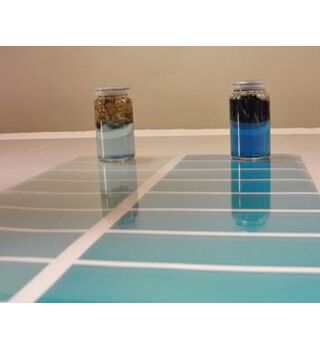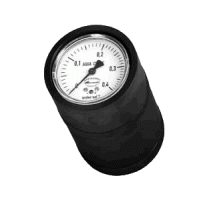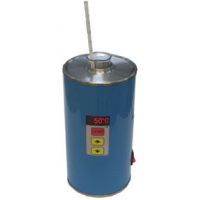Due to the chemical and not magnetic characteristic of this test it is possible to detect iron at an amount from 50 mg/l upwards. A variant, which is still under development, will focus especially on the range of 5 to 100 mg/l.
Meaning/ Advantages:
As different states of oxidized iron require different chemical treatments, the method is divided into two parts: The determination of total iron as result of mechanical friction and corrosion, and the determination of corroded iron caused by acid attack alone.The determination of the iron content in its two states allows an efficient adjustment of the lubrication of crosshead engines. Any system oil could get checked against iron contamination.
Procedure:
The test is easy to perform: Reagent and indicator get mixed in a glass tube and the oil sample get added. The tube gets placed in a heating bath for a well defined time.
The chemical reaction with any iron present causes a colour change of the liquid in relation to the amount of iron present. Once the reaction time has been reached, the tube gets removed from the heating bath, wiped dry and the colour of the liquid gets evaluated on a comparison chart. Actually, the tube gets moved along the coloured bars until no difference in colour can get observed in order determine the matching colour – and its corresponding iron content.
Preparation and evaluation included, it takes about 30 minutes to test a batch of 12 samples for total iron content. The test method has been applied for patent under application number 14 002 749.1.






